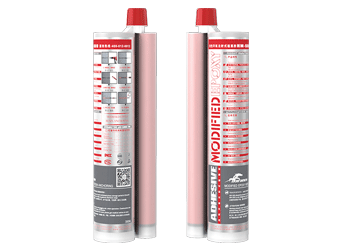Solutions
Horse Construction offers full range of structural strengthening materials with technical supports, documentation supports, products supports, project supports.
Materials used for concrete repair work (such as replacement and jacketing of concrete structural members) should have good adhesion to existing materials and should not shrink. Damaged structural components have been replaced with concrete. In order to reinforce the existing concrete components, other concrete including reinforcing steel was added in the form of a sheath.
Materials used for concrete repair work (such as replacement and jacketing of concrete structural members) should have good adhesion to existing materials and should not shrink.
Damaged structural components have been replaced with concrete. In order to reinforce the existing concrete components, other concrete including reinforcing steel was added in the form of a sheath.
Concrete repair, replacement and jacketing materials
A variety of materials are available for jacketing and changing concrete. We will discuss them below.
Polymer modified concrete and mortar:
Polymer-modified concrete and mortar are made by adding polymer latex. The polymer latex forms a continuous film when dry. This film bonds cement hydrates together to form a monolithic network where the polymer phases penetrate each other through the cement hydrates. The resulting matrix binds the aggregate more firmly and enhances the properties of mortar and concrete.
Polymer-modified concrete and mortar have better processability and water retention than ordinary concrete and mortar. This helps reduce the solidification of concrete components that are replaced or repaired. This material does not increase the compressive strength of concrete, but it does increase the tensile strength of concrete components.
The advantages of using this material are that it improves adhesion and cohesion with existing concrete and significantly reduces permeability. Due to the low permeability, the permeability of the concrete is reduced, and the durability of the reinforcement is enhanced.
Fiber reinforced plastic (FRP) concrete:
Fiber-reinforced plastics or polymers are used to reinforce concrete and masonry structures. This material replaces steel sheet bonding and is very effective in stiffening columns with an external wrap or jacket.
The main advantages of FRP are high strength-to-weight ratio and high corrosion resistance. The commonly used fibers in concrete are carbon fibers, glass fibers and aramid fibers. Common resins are polyester, vinyl ester and epoxy resin.
There are different types of fiber reinforced concrete and they are named according to the type of material used, such as carbon fiber reinforced polymer concrete, glass fiber reinforced polymer concrete and aramid fiber reinforced polymer concrete.
Epoxy concrete:
Epoxy resin is a polymer as described above. This is an excellent adhesive and has good mechanical strength, chemical resistance and ease of processing.
Epoxy resin is used in civil engineering for high-performance coatings, adhesives, grouting, high-performance systems, industrial flooring or grouting, etc. Low viscosity resin can be injected into fine cracks.
Higher viscosity materials are used as surface coatings or adhesives to fill larger holes and cracks. They can also be used to bond steel plates to distressed components.
Epoxy concrete is used in the following maintenance works:
Bonding plastic concrete to hardened concrete
Bonding rigid materials to each other
For patch work
Used to paint concrete to impart color, chemical resistance, water resistance and abrasion resistance.
Epoxy Mortar:
Epoxy mortar is made of epoxy resin and appropriately sized aggregate (sand). Compared with cement concrete, they have higher compressive strength, higher tensile strength and lower elastic modulus, which can be used to repair larger voids.
In cement mortar or concrete, consider including epoxy resin in the mixture with a second binder
You can find anything here you are in need of, have a trust trying on these products, you will find the big difference after that.

High strength, unidirectional carbon fiber wrap pre-saturated to form a carbon fiber reinforced polymer (CFRP) wrap used to strengthen structural concrete elements.

High strength carbon fiber reinforced polymer (CFRP) strip / laminate / plate for structural strengthening and concrete repair

Two-components modified epoxy resin adhesive, with high quality plastic tube, double cartridge package for anchoring